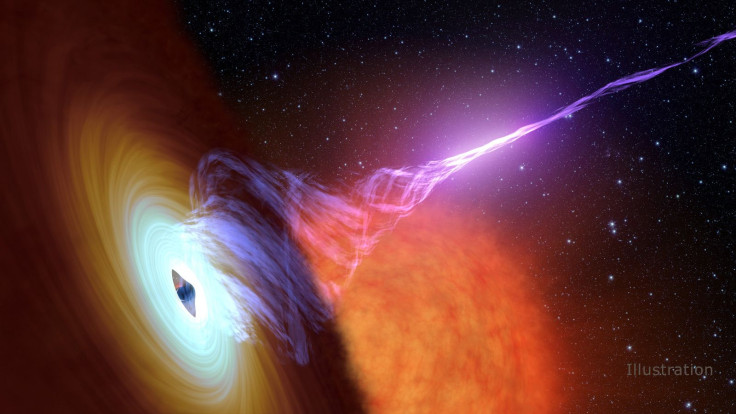Black Holes: Scientists Are Closer To Understanding Relativistic Plasma Jets

Black holes remain one of outer space’s greatest mysteries but scientists have recently learned a bit more about them, more specifically, about the jets of plasma that shoot out from them. The jets are not well understood by researchers who can’t seem to figure out where or how the plasma ends up shooting out of the black hole’s center in two opposite directions.
But scientists understand these relativistic jets made of plasma a bit better now thanks to data from NASA’s NuSTAR space telescope and a camera based in Spain called the ULTRACAM. Using these two pieces of equipment, scientists working on the research were able to find the distance that the particles in the jets travel before the “turn on” or become the bright sources of light they’re observed as, according to NASA.
The researchers used a binary system called V404 Cygni to study the bursts of light. That system consists of a star and a black hole closely orbiting one another. The black hole pulls matter off of the star where it forms a disk around the black hole that ends up forming the jets. As the black hole took in material the flat area surrounding the hole brightened.
Using the space telescope and the camera in Spain the researchers were able to establish that there was a .1 second delay between the appearance of the X-rays and the light, which is the moment when the plasma starts to shine.
The research and the findings were published in Nature Astronomy on Monday. The working theory is that strong magnetic fields end up propelling some of that material to high speeds. Then when it collides the plasma begins to emit the stream that appears to come out of the black hole. Essentially the idea is that the disk around the black hole ends up feeding the jet.
While the discovery of the time difference between the appearance of X-rays and the appearance of light doesn’t answer all of the questions about the relativistic jets, it does debunk other theories. It settles one theory about the origin of the flashes, said the lead scientist on the research, Poshak Gandhi, according to a release from the University of Southampton.
This animation shows the jets as they’re emitted from V404 Cygni. Matter can be seen as it’s pulled from the star and forms a disc around the black hole where the jets are coming from. The researchers worked on understanding how the jets can start shining once they start emitting matter.
© Copyright IBTimes 2025. All rights reserved.



















